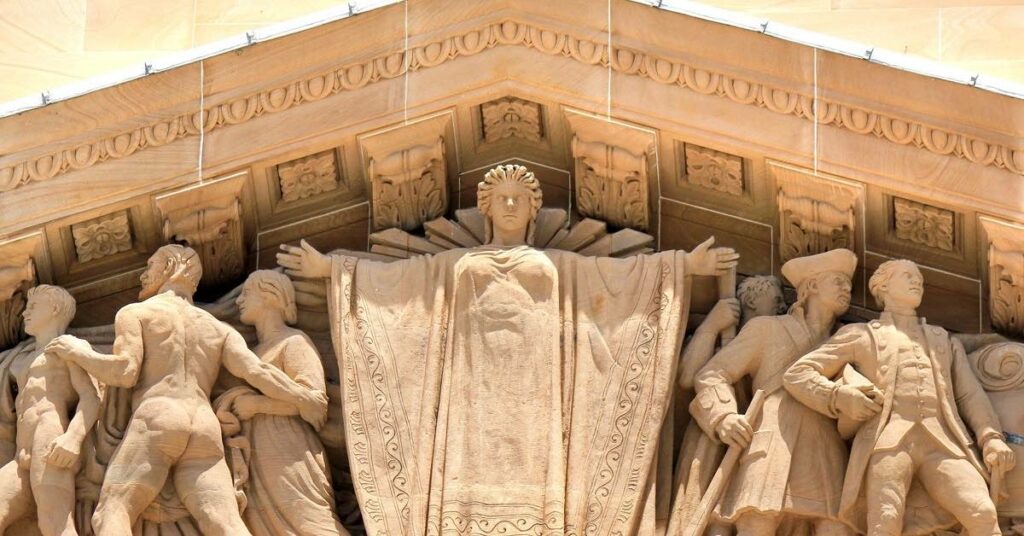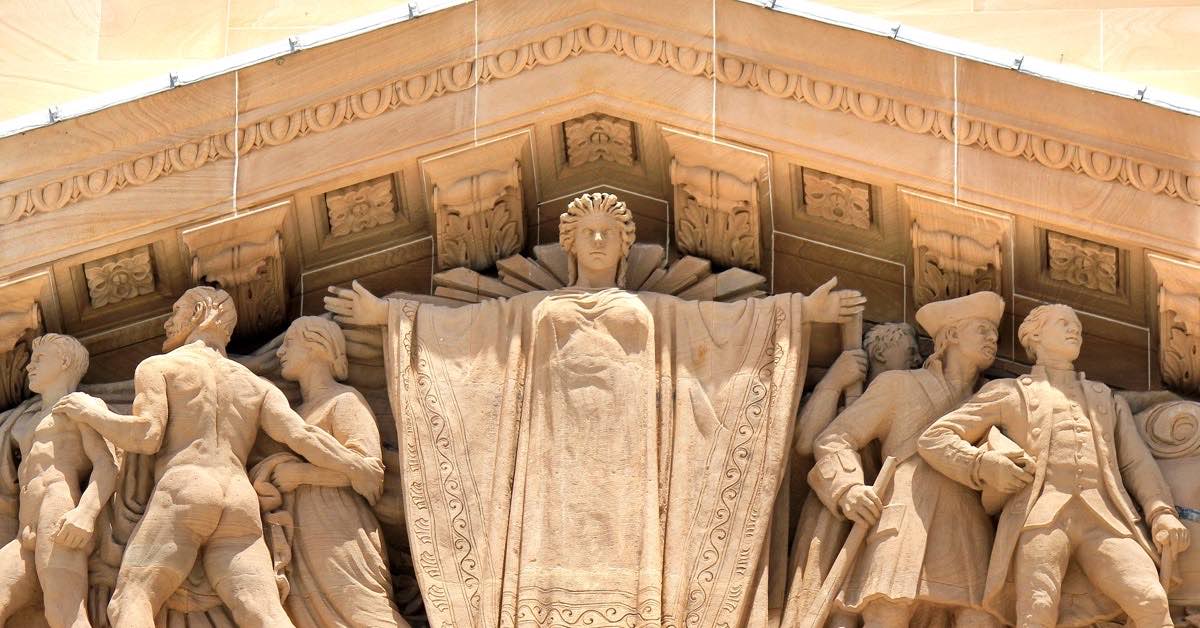Brisbane, the capital city of Queensland, Australia, is a treasure trove of architectural wonders. From modern skyscrapers to historical landmarks, the city boasts a diverse range of architectural styles that reflect its rich cultural heritage and urban development. We will take an in-depth look at the architectural features, influences, and significance of Brisbane’s architectural gems. Whether you’re a fan of architectural photography, an architecture enthusiast, or simply curious about the city’s unique cityscape, join us on a journey of architectural exploration in Brisbane.

Architectural Highlights of Brisbane
Brisbane is home to a plethora of iconic structures and architectural marvels that define its captivating cityscape. From the soaring heights of modern skyscrapers to the charming facades of historical landmarks, the architectural diversity in Brisbane is truly awe-inspiring. Whether strolling along the bustling streets or gazing at the city from a vantage point, you can’t help but be mesmerised by the architectural wonders surrounding you.
One of the most prominent architectural features in Brisbane is the beautiful blend of contemporary design and historical influences. The city’s modern skyscrapers showcase innovative architectural styles and cutting-edge technologies, while the historical buildings preserve the charm and character of a bygone era. This fusion of old and new creates a unique architectural tapestry that tells the storey of Brisbane’s evolution over time.
When exploring Brisbane’s architectural gems, you’ll encounter a diverse range of influences from various architectural movements. From the elegant Victorian architecture found in heritage-listed buildings to the sleek lines of Art Deco designs, each structure reflects the influence of its time and the vision of its architects.
With such a rich architectural heritage, Brisbane offers endless opportunities for architectural enthusiasts and photographers. Capture the grandeur of the iconic Storey Bridge, which serves as both a functional transport link and a symbol of the city’s resilience. Marvel at the intricate details of the City Hall, a magnificent example of Renaissance Revival architecture. And don’t forget to explore the riverside precinct of South Bank, where you can admire the stunning contemporary architecture of the Gallery of Modern Art and the Queensland Performing Arts Centre.
In the next section, we will delve deeper into the modern skyscrapers that grace Brisbane’s skyline, exploring their distinctive features and the architectural trends that shaped them. Stay tuned for an exciting journey through the skyscrapers of Brisbane.
The Influence of Architectural Styles
Brisbane’s architectural landscape is a captivating blend of various styles that have evolved over the years, defining the city’s unique urban design. From the colonial-era buildings in the city centre to the sleek and futuristic structures in the business district, Brisbane beautifully combines historical charm with modern innovation.
1. Colonial Architecture: The city’s architectural journey begins with the colonial-era buildings, which are a testament to Brisbane’s rich heritage. The Old Government House, constructed in the Georgian architectural style, stands prominently as a symbol of power and governance. Its grand facade and elegant design make it a must-see for history enthusiasts.
2. Art Deco and Modernist Designs: Moving ahead in time, Brisbane embraced the Art Deco and Modernist architectural styles in the early 20th century. The Commissariat Store, a heritage-listed building, showcases the Art Deco influence with its geometric shapes and decorative motifs. On the other hand, the Anzac Square Building represents the Modernist style with its clean lines and functional design.
3. Contemporary Skyscrapers: As Brisbane grew into a prominent city, it welcomed contemporary skyscrapers that reshaped its skyline. The Infinity Tower stands tall with its distinctive twisting design, creating a visual spectacle. The Riparian Plaza, with its sleek glass facade, exemplifies modern architecture’s focus on transparency and openness.
Whether you’re wandering through the city’s streets or gazing at its skyline, Brisbane’s diverse architectural heritage is impossible to ignore. It’s a city where the old and new intertwine, creating a visual tapestry that reflects its past, present, and future.
Preservation and Restoration of Architectural Heritage
In Brisbane, there is a concerted effort to preserve and restore the city’s architectural treasures. The historical buildings and landmarks play a crucial role in showcasing the city’s heritage and are a testament to its rich history. Organisations such as the Brisbane City Council and the Queensland Heritage Register work tirelessly to ensure that these architectural gems are protected for future generations to admire.
1. Restoration projects: Brisbane has witnessed numerous restoration projects aimed at preserving its architectural treasures. These projects involve meticulous research, documentation, and skilled craftsmanship to restore the buildings to their former glory accurately. For example, the iconic Customs House, which dates back to the late 19th century, underwent a comprehensive restoration process to revive its original grandeur.
2. Adaptive reuse: In addition to restoration, there is a growing trend of adaptive reuse in Brisbane’s architecture. This innovative approach involves repurposing older buildings for modern uses while maintaining their architectural integrity. Historic warehouses, churches, and industrial sites have transformed into trendy restaurants, art galleries, and office spaces. This adds character to the city and helps reduce urban sprawl by utilising existing structures.
3. Sustainability: Another significant aspect of preserving Brisbane’s architectural treasures is sustainability. The city is increasingly embracing sustainable practices in architecture, incorporating energy-efficient designs, green spaces, and renewable materials. This not only helps to reduce the environmental impact but also ensures the long-term viability of these buildings.
Preserving and restoring Brisbane’s architectural treasures is vital to maintaining the city’s unique identity and charm. These efforts not only celebrate the past but also contribute to the vibrant present and future of the architectural landscape in Brisbane.
Architectural Photography: Capturing Brisbane’s Beauty
Brisbane’s architectural wonders are not just limited to their physical presence but are also beautifully captured through the art of architectural photography. This form of photography focuses on capturing the unique angles, patterns, and details of buildings, allowing viewers to appreciate the intricate beauty of Brisbane’s architectural aesthetics.
Architectural photography is crucial in showcasing the diverse range of architectural styles in Brisbane. From the sleek lines of modern skyscrapers to the ornate detailing of historical landmarks, each photograph tells a storey and highlights the architectural significance of the city’s structures.
Architectural photographers often use specialised equipment and techniques to capture the perfect shot. They meticulously frame the subject, paying close attention to composition, lighting, and perspective. Through careful manipulation of these elements, they bring out the unique character of each building, creating visually captivating images that draw viewers into the world of Brisbane’s architecture.
-
Uncover the art of architectural photography and how it showcases Brisbane’s architectural aesthetics.
-
Explore the role of composition, lighting, and perspective in capturing the beauty of Brisbane’s architecture.
-
Discover the storeys behind some of the most iconic architectural photographs of the city.
By delving into the world of architectural photography, we can gain a deeper understanding of the creative vision behind Brisbane’s architectural gems and appreciate the timeless allure of the city’s urban landscape.
Architectural Fusion: Blending the Old with the New
In the modern buildings of Brisbane, there is a fascinating fusion of architectural styles that pays homage to the city’s rich heritage. Architects have cleverly incorporated elements of both modern and historical designs, creating a unique blend of past and present. These architectural gems serve as a testament to the city’s vibrant cultural identity and its commitment to preserving its history.
One example of this fusion can be seen in the use of traditional architectural motifs on contemporary skyscrapers. The intricate detailing of colonial-era facades can be found on the exteriors of sleek, glass-clad buildings, adding a touch of nostalgia to the city’s skyline. This juxtaposition of old and new adds visual interest and showcases Brisbane’s architectural evolution over time.
Another notable feature of modern buildings in Brisbane is the integration of sustainable design principles. With a focus on energy efficiency and eco-friendly practises, these buildings are not only visually stunning but also environmentally conscious. From green rooftops to rainwater harvesting systems, architects have embraced innovative strategies to reduce the carbon footprint of these structures. This commitment to sustainability sets Brisbane apart as a progressive and forward-thinking city in terms of architecture and urban planning.
Architectural Landmarks and Their Symbolism
Brisbane’s architectural landmarks are not just simply buildings; they carry deep symbolic significance that reflects the city’s identity and history. Each structure tells a unique storey, showcasing the values, aspirations, and achievements of the people who built and inhabited them. Whether it’s the iconic Storey Bridge, which symbolises the city’s resilience and progress, or the Old Government House, a testament to the colonial past, these landmarks are a testament to the city’s rich cultural heritage.
One such example is the Queen Street Mall, a vibrant pedestrian mall located in the heart of Brisbane’s central business district. It is a popular shopping destination and a hub of cultural activities and events. The mall’s design incorporates modern and historical architectural elements, creating a unique blend of old and new. The grand facade of the Commonwealth Bank building stands as a striking contrast to the sleek lines of the modern retail outlets. This juxtaposition of architectural styles showcases Brisbane’s ability to blend its diverse past seamlessly with its modern aspirations.
The Future of Brisbane’s Architecture
Explore the upcoming architectural projects that will shape Brisbane’s skyline. Brisbane is a constantly evolving city, with new buildings and developments constantly being planned and constructed. One of the most exciting projects on the horizon is the Queens Wharf development. This ambitious project aims to transform a large portion of the city’s waterfront into a vibrant entertainment precinct with world-class casinos, hotels, retail spaces, and public realm areas.
In addition to Queens Wharf, several other significant architectural projects are in the pipeline. The Neville Bonner Bridge, named after the first Indigenous Australian to become a federal parliamentarian, will serve as a new pedestrian and cycle bridge connecting the city centre to the cultural precinct of South Bank. This iconic bridge will not only provide a practical transportation link but also add a striking architectural element to the city’s skyline.
Other notable projects include the Brisbane Metro, a new public transportation system featuring dedicated busways and stations, and the Howard Smith Wharves revitalisation, transforming a historic wharf into a vibrant riverside precinct with dining, entertainment, and event spaces. Exciting times lie ahead for Brisbane’s architectural landscape, as these projects combine cutting-edge design with consideration for the city’s heritage and liveability.

